Dragonfly by Hazel Blomkamp
7th May 2021
Each time we have the privilege of featuring a new design by Hazel Blomkamp, it’s always an exciting moment. Hazel has always been known for her incredibly intricate designs, using a multitude of embroidery stitches, weaving techniques, beading and needlelace.
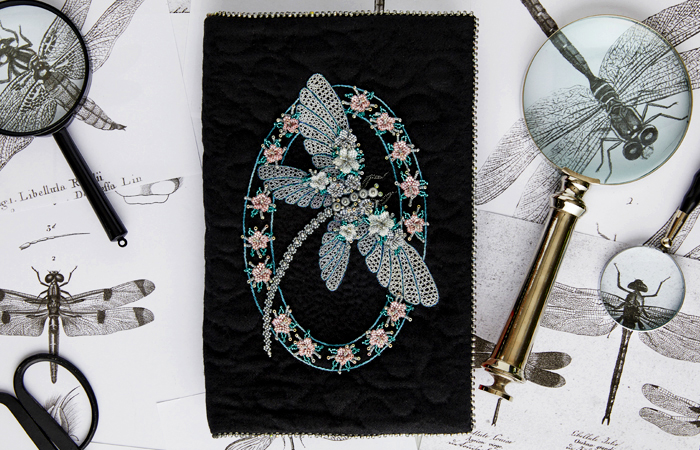
And with featured elements ranging from gorgeous Jacobean shapes to fantastical animals and birds, it seems that with every new design she creates, Hazel somehow manages to raise the bar yet again.
In Inspirations issue #110, we think Hazel has truly outdone herself with a magnificent needlelace, beaded Dragonfly.
This gloriously eye-catching project is worked using a multitude of beads and beading techniques as well as intricate needlelace to form the stunning, diaphanous wings of this beautiful insect.
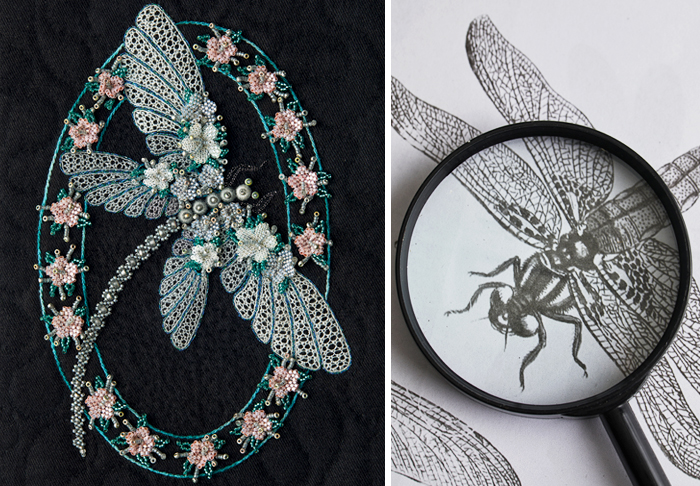
Hazel’s choice of needlelace in this project places her firmly within the long tradition of using needle and thread to create lace. However, there can be confusion when it comes to lace making, as there is a distinct difference between bobbin lace and needlelace.

Bobbin lace is made by twisting and braiding individual threads to create a lace design. The working threads are all wound onto wooden bobbins, hence the name, and the project is generally worked on a lace pillow that allows the lace to be held in place by pins.
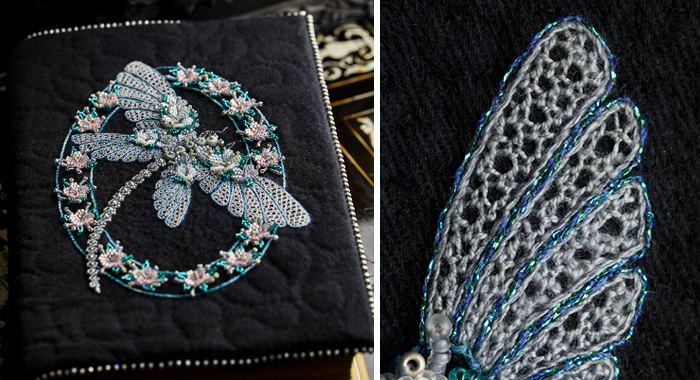
Bobbin lace is said to have originated on the Italian peninsula in the late 15th Century, growing in popularity over the following centuries to embellish the elaborate costumes worn throughout the ages.
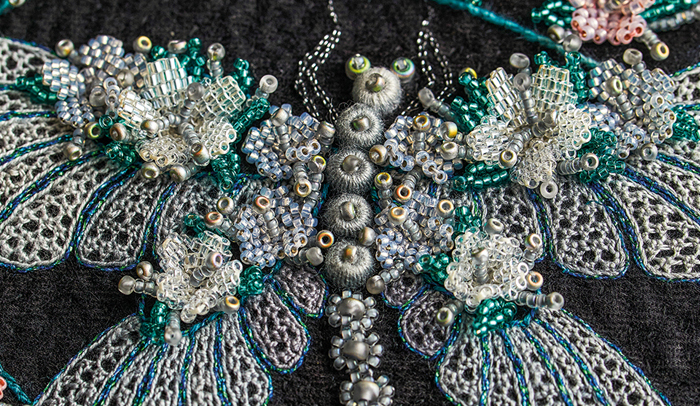
Needlelace, as the name implies, is worked using needle and thread. The lace is made up of hundreds of tiny stitches that form the lace pattern. It too originated on the Italian peninsula in the 16th Century, however it is said that needlelace derived from the stunning technique of Reticella, a form of openwork worked on linen.
Hazel’s choice of needlelace gives this Dragonfly an incredibly light and airy finish.
Because of the striking black background that shows clearly through the holes in the lace, the insect appears to hover above the fabric, just in the process of alighting within the gorgeous flowery oval framing it.
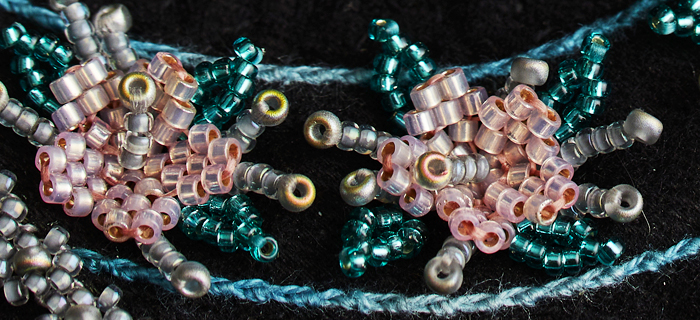
The body of this magical creature glitters with beads and crystals and the wings themselves are adorned with more beaded flowers that sit harmoniously amongst the pink blooms circling around the main subject. All of these elements together provide the perfect finish to this breath-taking project.

Winged Needlelace
Although Dragonfly looks complicated, there is no need to feel intimidated. As well as her innovative and beautiful designs, Hazel is also expert at providing clear, step-by-step instructions for all of the elements of her projects.
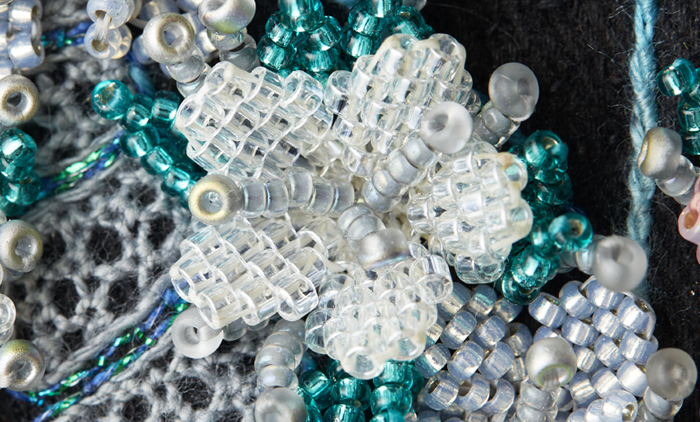
Whether you’re tackling the beaded flowers or the tiny blanket stitch patterns on the lacy wings, if you methodically follow Hazel’s instructions, you’re almost guaranteed to succeed in creating each element to perfection.
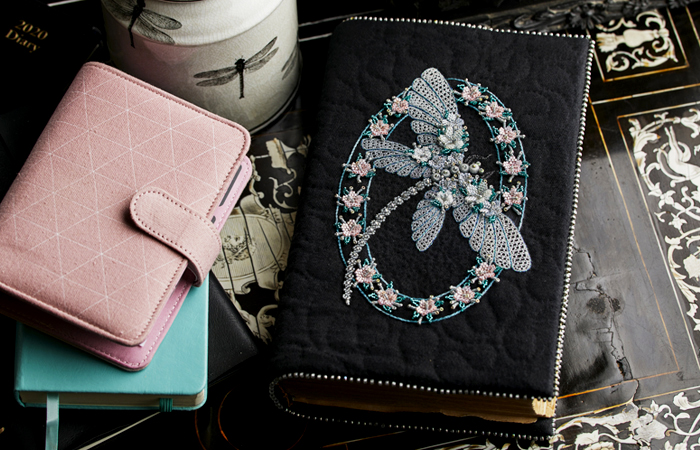
Hazel’s Dragonfly will look stunning on the wall, or it can even be turned into a very special book or diary cover. But no matter how you choose to finish off this project, the immense pleasure you’ll derive out of stitching it will be well and truly matched by the exclamations of wonder you’ll hear when people see it. Dragonfly really is a project to be admired.
Make Your Own Dragonfly
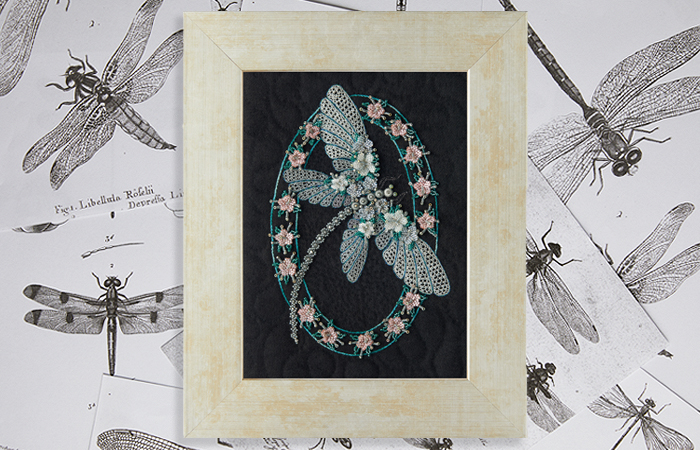
Step 1 – Purchase Project Instructions
Dragonfly by Hazel Blomkamp is a winged beauty depicted in needlelace and beading.
Inspirations Issue 110
Dragonfly – i110 Digital
Step 2 – Purchase Ready-To-Stitch Kit
The Inspirations Ready-To-Stitch kit for Dragonfly includes everything* you need to re-create this splendid study: Fabrics (unprinted), wadding, dressmaker’s carbon, beading and embroidery threads, beads and needles.
Dragonfly – i110 Kit
*Please Note: To cater for flexibility of purchase, instructions are not included with our kits. For step-by-step directions on how to create this project, please refer to the magazine/digital pattern.
The kit includes fabric for a framed panel only. If you wish to make a book cover you will require additional fabric and beads for the edging to suit the dimensions of your chosen book.
